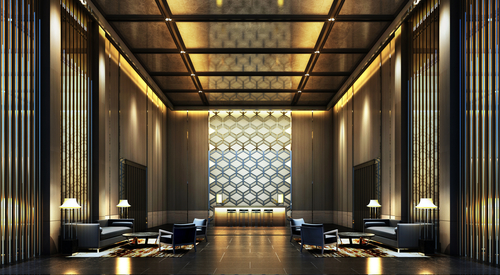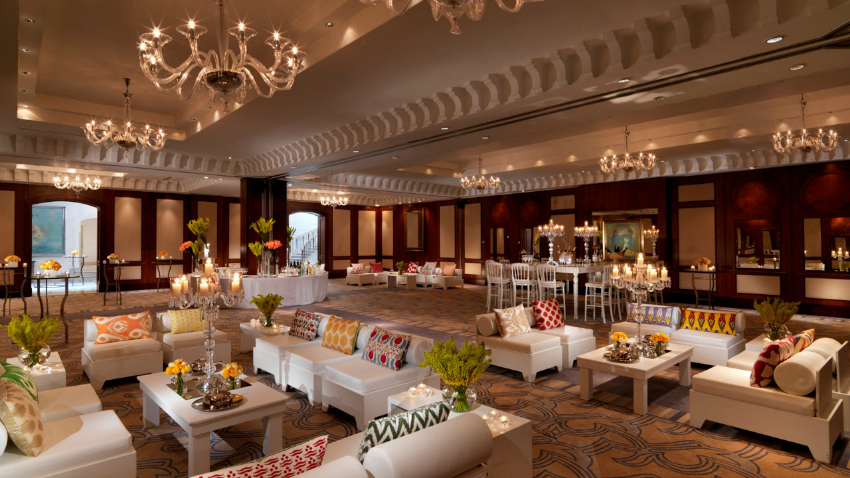Office, hotel, and school interior designs are all set to change because of Covid. This is just an example of how design is changing in airports, hotels, restaurants because of the COVID-19 pandemic.
Since the pandemic struck in March 2020, airports have implemented self-check-ins using apps, QR codes, electronic gates, facial recognition technology, and spacing out lines to provide a more seamless, touchless experience. It is not all about contactless tech: From walkable aisles to tiny offices in hotel rooms, the COVID-19 pandemic has changed how crowds are handled, down to the nitty-gritty details of the restaurant two-seater table. We have all seen hotel rooms transformed into workspaces for working from home, even private dining rooms.
Nowadays, the hotel industry has evolved to offer coworking spaces with a focus on design, as well as offering a flexible space in a guestroom which can double as an office setting of its own. This freedom to choose and alter the workspace on a daily basis presents a challenge for the hospitality industry and hospitality designers. Today’s travelers want to maximise their experiences, but also minimise risk, and that is driving the hospitality industry to develop new types of spaces. The need to reconsider the way guests can interact with amenities has changed the traditional hospitality process, and, in turn, hospitality design. The hospitality industry is navigating an array of new expectations and behaviors from customers, and many are asking how they will affect the design and role of hotels. We are now getting the opportunity to look at how the hotel industry is responding to the multiple challenges through design ideas that are creating a new, innovative user experience.
Mark Kelly also describes how the core elements of hotel interior design in UK must be adaptable to changing user needs. Mark Kelly explored how hotels might adjust to societal changes brought on by post-Covid, and what benefits might accrue for guests, hoteliers, and the local community. With business travel expected to decrease, tourism and local commerce will increase, Mark Kelly said post-Covid hotel users will be looking for safer, more secure environments, luxuries and hospitality experiences, as well as more amenities all in the same place.
Either way, thanks to flight anxiety brought about by COVID-19, the hotel industry has seen an uptick in travel to and from home, as well as in-state hotel stays. As one of the sectors hardest hit by the COVID-19 pandemic, the hotel industry has seen a number of popular hotels close down in key destinations. Among those industries responding to post-pandemic demands is the hospitality sector. Building upon its use as healthcare provision spaces during the COVID-19 pandemic, such a repurposing surely has precedent in considering future needs.

Some hotels worked with local hospitals to repurpose parts of their hotels to house traveling nurses, medical workers, and, in some cases, a COVID-19 pandemic treatment centre. Some hotels have even leased out their underutilized kitchen spaces, converted them to Ghost Kitchens (a pivot of the COVID-era), in which kitchens are used for cooking and serving meals for selected hotels serving services or for local customers. Hotel jobs, said My-Nga Lam, design lead for Lucien Lagrange Studio Chicago, has slowed due to COVID-19, but some developers have indicated that they are looking to continue their projects as housing buildings, which could then serve as Airbnb properties, then be converted to extended-stay hotels down the road. In the short-term, hotels are being reinvented to respond to the emergency, by turning spaces for health uses and quarantine shelters during COVID-19.
Interior designs are being reconfigured around the reality that teleworking is here to stay. Some of the biggest changes will come to spaces where people are more likely to gather, including offices, hotels, and multifamily spaces. All of the guest-facing common areas, like lobby areas, the front desk, and where people love to gather and socialize, will be designed to allow flexibility and multipurpose uses. Hotels usually divide up conference rooms using Moderco mobile walls, but Covid has forced commercial interior designers in London to consider the division of other areas.
The flex space maximizes return on otherwise wasted space, provides privacy from the traditional office, and, in turn, presents architects and designers with a whole host of new and fascinating challenges. Large, moving spaces are safer options when designing hotels for the purposes of the future, as they allow social distancing and minimum contact between guests. Hotel facilities, which have always supported corporate needs with well-designed, highly connected conference and meeting spaces, are leading by providing design in the common areas for enhanced collaboration.
The move into wellness and health care offerings would redefine the spaces you can use and were Redefining the spaces capabilities with Covid’s mobile wall systems. Office, hotel, and school designs and constructions will place more importance on health-related features, such as required social distancing, reduced physical touch (electric walls), and antimicrobial surfaces. Along with the coining of new COVID-19-related slang terms like Corona cations and Corona safe, hotels, restaurants, and event spaces are making significant changes in their hotel marketing focuses, messaging, and offerings to meet consumers where they are, mentally as well as physically.
In addition to dining outdoors, the latest wave in restaurant design offers a nod to the past. In terms of style, hotel designs are moving toward domestic accents; moody, colorful lamps; and wood furniture and couches in the hotel lounges. More importantly, hotels cutting-edge design ambitions are providing a thrilling, inspirational backdrop for daily living, courtesy of some of the world’s most prominent architectural and design talents.
